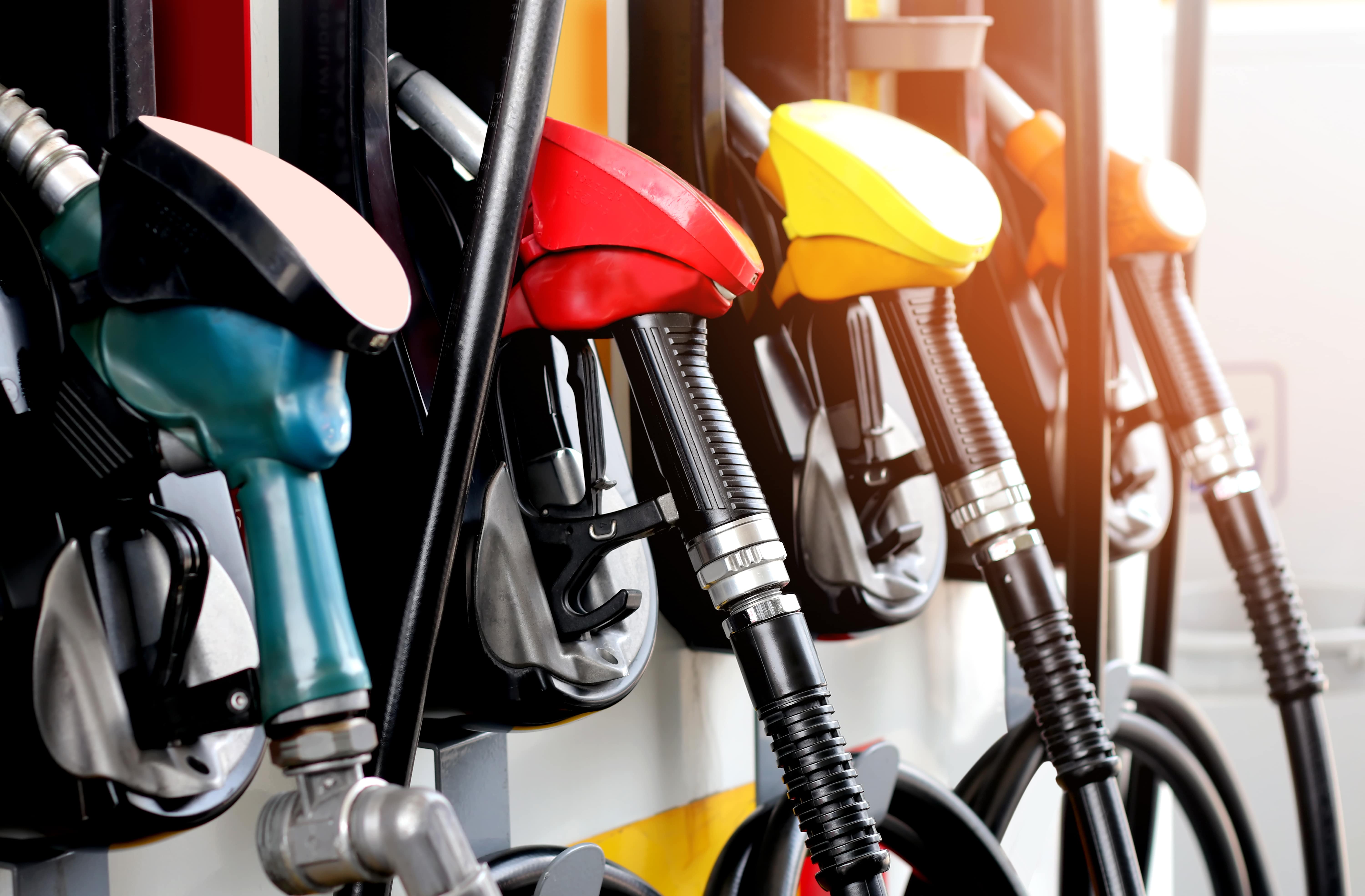
Guest
Üzemanyag-takarékossági tippek tehergépkocsi-vezetőknek
Létrehozva: 16. 08. 2024
•
Frissítve: 10. 10. 2024
A járművek üzemanyag-takarékossága az egyik legfontosabb szempont, amely befolyásolja a közlekedési vállalatok költségeit. Mind vezetőként, mind járművezetőként létfontosságú megérteni, hogyan lehet javítani az üzemanyag-hatékonyságot. A SNAP-nál arra törekszünk, hogy szakmai támogatást nyújtsunk mindenkinek, aki a fuvarozással foglalkozik - ezért összeállítottunk egy listát azokról a tippekről, amelyek segíthetnek az üzemanyag-hatékonyságban az utakon.
Miért olyan fontos az üzemanyag-fogyasztás?
Ahhoz, hogy teljes mértékben megértsük a benzin üzemanyag-hatékonyságának fontosságát, érdemes megvizsgálni, hogy az üzemanyagköltségek milyen szerepet játszanak a közlekedési vállalatok költségvetésében. Különböző jelentések szerint az üzemanyagköltségek a [flottaüzemeltetők] kiadásainak 25-35%-át tehetik ki (https://snapacc.com/fleet-operators/). Az üzemanyag-takarékos tippek alkalmazásával jelentősen csökkenthetők a költségek, így a költségvetés jelentős része felszabadulhat más beruházásokra.
Egy másik szempont, amiért érdemes üzemanyagot fogyasztani, az az ökológia. Annak ellenére, hogy az elektromos járművek lassan teret nyernek a teherszállításban, a legtöbb flotta még mindig nagyrészt hagyományos belső égésű motorral felszerelt teherautókból áll. Mivel a szállítás a globális szennyezéskibocsátás egyötödéért felelős, az üzemanyag-takarékossági tippek nemcsak Önnek és cégének, hanem a bolygó egészének is segíthetnek.
Üzemanyag-takarékossági tippek a SNAP-tól az Egyesült Királyság és Európa járművezetői számára
Az emelkedő költségek leküzdése és a szennyezőanyag-kibocsátás csökkentése érdekében összeállítottunk egy listát a flotta optimális üzemanyag-hatékonyságának eléréséhez szükséges tippekről. Ezek tényleges tapasztalatokon és megbízható iparági partnerek ajánlásain alapulnak - biztos lehet benne, hogy tippjeink végrehajtása jelentős hatással lesz az üzemanyag-fogyasztásra.

1. Lassan és biztosan győz a verseny
Bár csábító lehet, hogy igyekezzünk minél hamarabb célba érni, fontos, hogy vezetés közben figyelembe vegyük a sebességkorlátozásokat. A jelenlegi korlátozások 2015 óta vannak érvényben, és az egy- és kétsávos utakon 50, illetve 60 mérföld/órában, az autópályákon pedig 70 mérföld/órában határozzák meg a maximális sebességet. Fontos, hogy a 7,5 tonna feletti járművekre (a súlyt az autó teherautó súlya és az áru súlya alapján számítják ki) szigorúbb sebességkorlátozások vonatkoznak, beleértve az autópályákon a 60 mérföld/órás sebességet. Jól dokumentált tény, hogy az egyenletes vezetés és a sebességhatárok betartása segít a jármű üzemanyag-takarékosságában - mi több, segít elkerülni a gyorshajtási bírságokat és jelentősen csökkenti a baleseti kockázatot.
2. Ismerje meg az üzemanyag-takarékosságot
Ahhoz, hogy teljes mértékben megértse vezetési stílusának a szállítási költségekre gyakorolt hatását, ismernie kell az üzemanyag-takarékosság fortélyait. Az MPG a flotta üzemanyag-fogyasztásának mérésére leggyakrabban használt mértékegység. A számítás meglehetősen egyszerű, de a mértékegységek zavaróak lehetnek, mivel a legtöbb benzinkút az Egyesült Királyságban és Európában literben árulja az üzemanyagot. Egy brit gallon 4,546 literrel egyenlő. A legtöbb jelenlegi jármű menet közben is szolgáltat MPG-statisztikát, így vezetés közben is könnyen nyomon követheti üzemanyag-fogyasztását.
3. Fékezzen kevesebbet és vezessen egyenletes tempóban.
A nyugodt vezetési stílus csodákat tehet a teherautó üzemanyag-fogyasztása szempontjából. Használja a motorfékezést, ahol csak tudja, tartson biztonságos távolságot Ön és a többi autó között, és ami a legfontosabb - használja a józan eszét az úton. Maradjon éber, hogy gyorsan felismerje azokat a helyzeteket, amelyek miatt lassítania kell, és ennek megfelelően állítsa be a sebességet, hogy biztonságban legyen, és egyúttal csökkentse az üzemanyag-fogyasztást.
4. Lehetőség szerint magasabb sebességfokozaton vezessen
Egy másik szempont, amit figyelembe kell vennie, az a motor működése - a magasabb sebességfokozat kevesebb percenkénti fordulatszámot jelent, ami kisebb terhelést jelent a motor számára. Hacsak nem lejtőn haladsz lefelé, vagy nem előzéshez csökkented a sebességet, próbálj, amikor csak lehet, a legmagasabb fokozatban maradni. Ez az egyik legfontosabb vezetési technika az üzemanyag-megtakarítás érdekében.

5. Vigyázzon a teherautóra
Vigyázzon járművére, és az vigyázni fog Önre. Rendszeresen karbantartja járművét, tartsa szemmel az olajszintet és a gumiabroncsok nyomását, és ellenőrizze a motor hatékonyságát. Ezekkel az üzemanyag-megtakarítási vezetési tippekkel sokat tehet, és késleltetheti a javításokat és egyéb karbantartási munkákat. A flottaüzemanyag-takarékosság gyakran figyelmen kívül hagyott szempontja a megfelelően felfújt gumiabroncsok, amelyek akár 2 százalékkal is csökkenthetik az üzemanyag-fogyasztást.
6. Tervezze meg az útvonalat, és tájékozódjon az útviszonyokról
Ha előre megtervezi az útvonalát, elkerülheti, hogy rosszul kanyarodjon el, és feleslegesen növelje az útvonal kilométereit. Ezt gyakran automatikusan elvégzi a navigációs készülék, de az útvonal további optimalizálása érdekében folyamatosan tájékozódnia kell a lehetséges kerülőutakról és a rossz útviszonyokról is.
7. Tartsa szem előtt az aerodinamikát
Ami gyakran kimarad az üzemanyag-megtakarítási tippeknél, az a légellenállás hatása az üzemanyag-felhasználásra. Nagyobb sebességnél még a nyitott ablakok is károsan hathatnak a benzintakarékosságra. Az aerodinamikai veszteségek akár 20%-kal is növelhetik az üzemanyag-fogyasztást - ezt a pontot mindenképpen érdemes szem előtt tartani vezetés közben.
8. A legüzemanyag-takarékosabb teherautók használata
Ez a tipp inkább a flottakezelőknek szól, de okos dolog, ha ezt sofőrként is észben tartod. Noha nehéz kiválasztani az egyetlen legtakarékosabb teherautót, üzemanyag-takarékos teherautókból biztosan nincs hiány a piacon - különösen az újabb modellek között. A jó MPG-vel rendelkező teherautók minden fuvarozó cég számára létfontosságúak. Bár egyes esetekben a legjobb MPG-értékkel rendelkező teherautók kezdeti költségei magasabbak lehetnek, mint egy több üzemanyagot használó alternatíváé, a megtakarítás hosszabb idő alatt válik nyilvánvalóvá.
9. Állítsa le a motort üresjáratban
Különösen akkor kerülhetsz gyakran olyan helyzetbe, amikor az autópályáról letérve a végcélodhoz érve, amely lehet, hogy egy városban van, akár hosszabb időre is megállhatsz a forgalomban. Ilyenkor érdemes egy időre kikapcsolni a motort. Ez még a legjobb üzemanyag-takarékos teherautóknak is előnyös - egyúttal csökkentheti a károsanyag-kibocsátást és a zajszintet.
10. Használjon megbízható megoldásokat, hogy segítsen az úton
Egy parkolóhely vagy egy jó hely keresése a tankoláshoz sok felesleges kilométert adhat az útvonalhoz. A folyamat felgyorsításához használhat TMS (Transport Management System) szoftvert - a SNAP platform a flottaüzemeltetők és a járművezetők számára egyaránt elérhető. A rendelkezésre álló funkciók közé tartozik a SNAP Parking modul, amely lehetővé teszi, hogy megtalálja kamionmegállókat és depó parkolókat - ezzel időt és üzemanyagot takaríthat meg.

Összefoglalva - vezessen egyenletesen, vegye figyelembe az aerodinamikát, használja a megfelelő járművet és használja ki a SNAP-fiók funkcióit.
Hogyan érheti el a jármű optimális üzemanyag-fogyasztását? Az üzemanyag-fogyasztás csökkentésének számos módja van - a nyugodt és egyenletes vezetési stílus megtartásától kezdve a legüzemanyag-takarékosabb teherautók használatán át az aerodinamikára és a teherautó karbantartására való odafigyelésig. A SNAP Account platformon elérhető funkciók, például a SNAP Fuel és a SNAP Parking kihasználásával is nagyszerű eredményeket érhet el.
Megoldásaink jelenleg több mint 185 000 járművezetőnek nyújtanak segítséget Európa-szerte, és több mint 8500 flottának segítenek megtakarítani az üzemanyagköltségeket. Az üzemanyagra fordított kiadások egy fuvarozó vállalat kiadásainak 25-35%-át is kitehetik - a gazdasági előnyök mellett a benzinhatékonyság a bolygó szempontjából is létfontosságú, mivel segít csökkenteni a károsanyag-kibocsátást.



